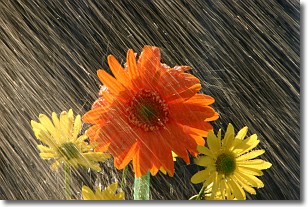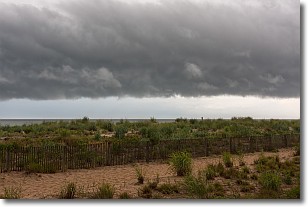Weather Alert in Louisiana
Special Weather Statement issued June 10 at 4:39PM CDT by NWS New Orleans LA
AREAS AFFECTED: St. John The Baptist; St. Charles; Upper St. Bernard; Lower St. Bernard; Southeast St. Tammany; Western Orleans; Eastern Orleans; Northern St. Tammany; Southwestern St. Tammany; Upper Jefferson; Upper Plaquemines; Central Plaquemines; Northern Hancock; Southern Hancock; Southern Harrison
DESCRIPTION: At 439 PM CDT, Doppler radar was tracking strong thunderstorms capable of producing waterspouts over marine areas along a line extending from near Lacombe to near Metairie. Movement was east at 35 mph. HAZARD...Waterspouts, wind gusts up to 40 to 50 mph, and penny size hail. SOURCE...Radar indicated. IMPACT...Waterspouts can easily overturn boats and create locally hazardous waters. Gusty winds could knock down tree limbs and blow around unsecured objects. Minor damage to outdoor objects is possible. Locations impacted include... New Orleans, Slidell, Bay St. Louis, Waveland, Metairie, Hahnville, Laplace, Chalmette, Avondale, Diamondhead, Harvey, East New Orleans, Timberlane, Marrero, Belle Chasse, Jefferson, Gretna, Harahan, Westwego, and Pearl River. This includes the following Interstates... Interstate 10 in Louisiana between mile markers 210 and 255, and between mile markers 259 and 273. Interstate 10 in Mississippi between mile markers 1 and 22. Interstate 12 between mile markers 71 and 84. Interstate 59 in Louisiana between mile markers 1 and 8. Interstate 310 between mile markers 1 and 8. Interstate 510 between mile markers 1 and 3. Interstate 610 between mile markers 1 and 4.
INSTRUCTION: If outdoors, consider seeking shelter inside a building. If on or near marine areas, get out of the water and move indoors or inside a vehicle. Remember, lightning can strike out to 10 miles from the parent thunderstorm. If you can hear thunder, you are close enough to be struck by lightning. Move to safe shelter now! Do not be caught on the water in a thunderstorm.
Want more detail? Get the Complete 7 Day and Night Detailed Forecast!
Current U.S. National Radar--Current
The Current National Weather Radar is shown below with a UTC Time (subtract 5 hours from UTC to get Eastern Time).

National Weather Forecast--Current
The Current National Weather Forecast and National Weather Map are shown below.

National Weather Forecast for Tomorrow
Tomorrow National Weather Forecast and Tomorrow National Weather Map are show below.

North America Water Vapor (Moisture)
This map shows recent moisture content over North America. Bright and colored areas show high moisture (ie, clouds); brown indicates very little moisture present; black indicates no moisture.

Weather Topic: What is Precipitation?
Home - Education - Precipitation - Precipitation
 Next Topic: Rain
Next Topic: Rain
Precipitation can refer to many different forms of water that
may fall from clouds. Precipitation occurs after a cloud has become saturated to
the point where its water particles are more dense than the air below the cloud.
In most cases, precipitation will reach the ground, but it is not uncommon for
precipitation to evaporate before it reaches the earth's surface.
When precipitation evaporates before it contacts the ground it is called Virga.
Graupel, hail, sleet, rain, drizzle, and snow are forms of precipitation, but fog
and mist are not considered precipitation because the water vapor which
constitutes them isn't dense enough to fall to the ground.
Next Topic: Rain
Weather Topic: What are Shelf Clouds?
Home - Education - Cloud Types - Shelf Clouds
 Next Topic: Sleet
Next Topic: Sleet
A shelf cloud is similar to a wall cloud, but forms at the front
of a storm cloud, instead of at the rear, where wall clouds form.
A shelf cloud is caused by a series of events set into motion by the advancing
storm; first, cool air settles along the ground where precipitation has just fallen.
As the cool air is brought in, the warmer air is displaced, and rises above it,
because it is less dense. When the warmer air reaches the bottom of the storm cloud,
it begins to cool again, and the resulting condensation is a visible shelf cloud.
Next Topic: Sleet
Current conditions powered by WeatherAPI.com




